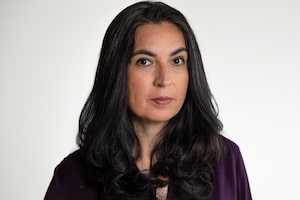A vigil organized by the First Nations University of Canada for victims of the mass stabbing, in Prince Albert, Saskatchewan, Canada on Sept. 7, 2022.AMBER BRACKEN/The New York Times News Service
Over the past week, a Thunder Bay hotel’s conference room has become home to a land-based healing and recovery program. There, 17 women from one northern First Nation about two hours down the highway – women who are addicted to opioids, alcohol, crystal methamphetamine (jib) and/or methadone, which is itself used to treat the horrific, widespread disease of addiction that plagues First Nations communities – are participating.
Around Lake Superior’s northern shores, the devastation of drugs created to treat extreme pain – oxycodone, fentanyl, methadone, morphine and heroin – is there for all to see, including in the yellow needle disposal units affixed to the walls of many public washrooms. The Thunder Bay District Health Unit reports that from April, 2021, to March of this year, the opioid death rate was 82.1 per 100,000 people – four times Ontario’s rate of 18.7 per 100,000. There has been a 50-per-cent increase in deaths between 2020 and 2021 in that district – or about two people dying every five days, according to the CBC.
As a northern hub city, Thunder Bay is where many First Nations people come to access health services for addiction, even though the city’s hospital and shelter system is already beyond stretched. The stories of addiction I’ve heard are heartbreaking: of homes being stripped of furniture and electronics just to afford the next hit; of essentially parentless children who are at daily risk of violence; of mothers so desperate for drugs that they sell their daughters to get high.
And so the awful news about the alleged actions of two brothers who reportedly lived and grew up in this cycle of addiction and abuse fell over the people gathered in that hotel room with muted sadness and deep understanding.
We do not yet know exactly what happened around the tragedy that took place in Saskatchewan over the Labour Day long weekend. But here is what we do know: 10 people are dead and 18 others were injured after a series of stabbing attacks on James Smith Cree Nation and in the nearby community of Weldon. Damien Sanderson, one of the suspects, was also found dead outside a house on that First Nation, just east of Prince Albert. The other suspect, his brother Myles – whose lengthy 20-year parole records say he began to drink and use weed at 12, cocaine by 14, and crystal meth in his 20s, while noting that he had a long history with gangs and grew up surrounded by domestic violence and substance abuse – was arrested on Wednesday, but died after going into what the RCMP called “medical distress.”
From the start, news reports quoted James Smith Cree community members blaming the attacks on addiction. “The battle we’re fighting here is not with each other. … The battle we’re fighting here is with alcoholism and drug use,” Darryl Burns, whose sister Gloria was killed, told Global News.
Myles Sanderson’s parole records bear that out, citing “intergenerational impacts of residential schools.” It was effectively a case study in what can emerge after decades of genocide and after institutions fail to account for the human cost of historical colonial policies.
When the last Indian Residential School closed in Canada in 1996, there was nothing to support the survivors as they struggled to rebuild their tattered lives. Most returned to First Nations in free fall, to families ripped apart by federal policies enacted by religious orders that in many cases resorted to abuse. And instead of admitting to genocide, Canada turned away, dismissing these as Indigenous peoples’ problems.
Instead of setting up mental-health clinics, traditional healing centres, or places to care for wounded and destroyed spirits, successive governments in Canada provided little more than child-welfare and prison systems that effectively swept up many of the kids of survivors and took them away from their homes and communities, leaving children without any sense of belonging.
That’s how violence can manifest: through trauma, left unchecked.
We have seen what happens when we fail to deal with the social fallout of residential schools and racist policies such as the Indian Act. There have been countless reports warning against continued inaction by Canada – from the Royal Commission on Aboriginal Peoples, to the Truth and Reconciliation Commission’s four volumes, to the National Inquiry on Murdered and Missing Indigenous Women and Girls.
So it is time for Canada to take responsibility and enact a giant Marshall Plan of change. Come together with our communities. Listen to Indigenous peoples and leaders. Bring true reconciliation to that cold, empty word that has left us in a state of seemingly inevitable, violent flux.
Myles Sanderson’s story is all too familiar. But it doesn’t have to be.
 Tanya Talaga
Tanya Talaga